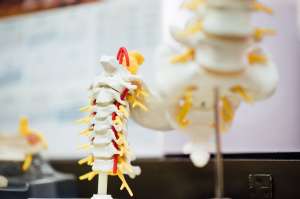Many Americans are struggling to get proper sleep, and the National Institutes of Health report that between 50 and 70 million Americans have chronic sleep disorders. These findings point to a general trend of sleep deficiency and sleep deprivation, which cause fatigue, irritability, and an inability to concentrate. This is especially true if you're dealing with poor mental health or a condition like insomnia.
When you're tired and can't get enough sleep, it's tempting to reach for some medication, but that's a short-term fix. Because sleep is interconnected to various facets of your well-being, it's worth looking at different sleep therapy techniques to help you sleep better.
What is Cognitive Behavioral Therapy for Insomnia (CBT-I)?
CBT-I is the most commonly applied sleep therapy and is often regarded as the fold standard of evidence-based treatment for sleep issues. It's based on the CBT model, so it involves recognizing and replacing unhealthy sleep-related thoughts and behaviors with healthier ones.
When discussing sleep problems, there's usually a question of how it originates. Did your sleep disorder lead to poor mental health symptoms? Or do you have a mental health condition that's making it difficult to sleep? Even then, whether you have normal anxiety vs. anxiety disorders can determine the extent to which your mental health determines your sleep.
How Does CBT-I Work?
Many practitioners refer to CBT-I as a multi-component method since it involves multiple different approaches. Sessions with your sleep therapist can comprise educational, cognitive, and behavioral aspects.
- The educational component involves informing you about the connection between your feelings, thoughts, and behaviors.
- The cognitive component refers to restructuring, which changes unhelpful sleep-related thoughts.
- The behavioral component refers to stimulus control, relaxation training, and sleep training to encourage healthy sleeping habits.
Sleep Therapy Techniques
So, what techniques does a sleep therapist implement as part of CBT-I? Some of the most important techniques are as follows:
Sleep Restriction
Sleep restriction is a highly effective CBT-I practice that requires you to cut back on the amount of time you spend not sleeping in bed. Suppose you aim for eight hours of sleep each night but only sleep for five and spend the other three tossing and turning. By reducing how much time you spend in bed, you increase sleep pressure and feel tired the next day. Once you start sleeping better, you can spend more time in bed until you're sleeping a full eight hours.
Cognitive Restructuring
If you're struggling with insomnia, it's likely that you experience unhelpful or inaccurate thoughts regarding sleep. These thoughts lead to behaviors that make it difficult to fall asleep, which reinforces your unhelpful thoughts. Here's an example: if you've had previous experiences of insomnia or other sleep disorders, they can lead to worries about falling asleep. This worry can cause you to spend excessive amounts of time in bed trying to force your body to fall asleep.
The purpose of cognitive restructuring is to break the cycle by identifying, challenging, and changing thoughts that cause sleep issues. Your therapist can help you evaluate thoughts regarding the consequences of missed sleep from a more objective lens.
Improving Sleep Hygiene
In order for other techniques to work, you'll need to improve your sleep hygiene, which involves developing healthy sleep-related habits. Depending on your current sleep routine, this can mean changing aspects of your lifestyle, like cutting back on caffeine and alcohol consumption, quitting smoking, and getting more exercise. Other tips include:
- Waking up at the same time every day (yes, even on weekends) can help you get consistent sleep.
- Avoid excessive napping and limit yourself to a short nap during the early afternoon.
- Set a target bedtime and make sure you're ready for bed around the same time every night.
Optimizing Your Sleep Environment
Your environment can affect how easily you fall asleep and how long you sleep. If you want to fall asleep as soon as you get to bed, you need a calm and peaceful environment. A few ways to optimize your bedroom environment include:
- Make sure your pillow, mattress, and bedding are comfortable.
- Setting a slightly cooler temperature while making sure you're comfortable.
- Using earplugs to prevent noise from waking you up.
- Wearing an eye mask or installing heavy curtains to keep light out.
Practicing Stimulus Control
Sure, you may be ready to sleep, but certain stimuli can tell your brain to stay awake. With stimulus control, you remove stimuli that condition your mind to stay awake. It's common for people to engage in mentally stimulating activities while sitting in bed, like watching TV or using their phone. Your therapist will help you alter these associations so that you equate your bed with sleep. This means you'll get out of bed when you can't fall asleep and only go back to bed when you're tired.
Relaxation Training
The behavioral component of CBT-I includes relaxation training, a set of techniques that can calm your racing thoughts. These can include progressive muscle relaxation, which requires tensing and relaxing different muscle groups. Deep breathing is a common technique that involves taking deep, slow breaths to alleviate feelings of anxiety.
Benefits of Sleep Therapy
Practicing the above-mentioned sleep therapy techniques comes with various benefits, such as:
- Reducing unhelpful sleep-related thoughts and behaviors.
- Encourages healthy sleeping habits like sticking to a specific bedtime and rise time and avoiding caffeine or alcohol before bed.
- Reduces dependence on medication such as sleeping pills, allowing you to get quality sleep on your own.
- Improves adherence to mental health treatment. Getting more sleep can make you responsive to psychotherapy and other interventions.
Conclusion
CBT-I is an effective approach to addressing sleep issues, whether they're caused by or are the trigger for mental health concerns. Some of the common techniques used are cognitive restructuring, sleep restriction, optimizing your environment, and stimulus control. By practicing some of these techniques, you experience benefits such as a reduction in dysfunctional sleep-related thoughts and behaviors, an improvement in sleep hygiene, and a lowered dependence on medication.






